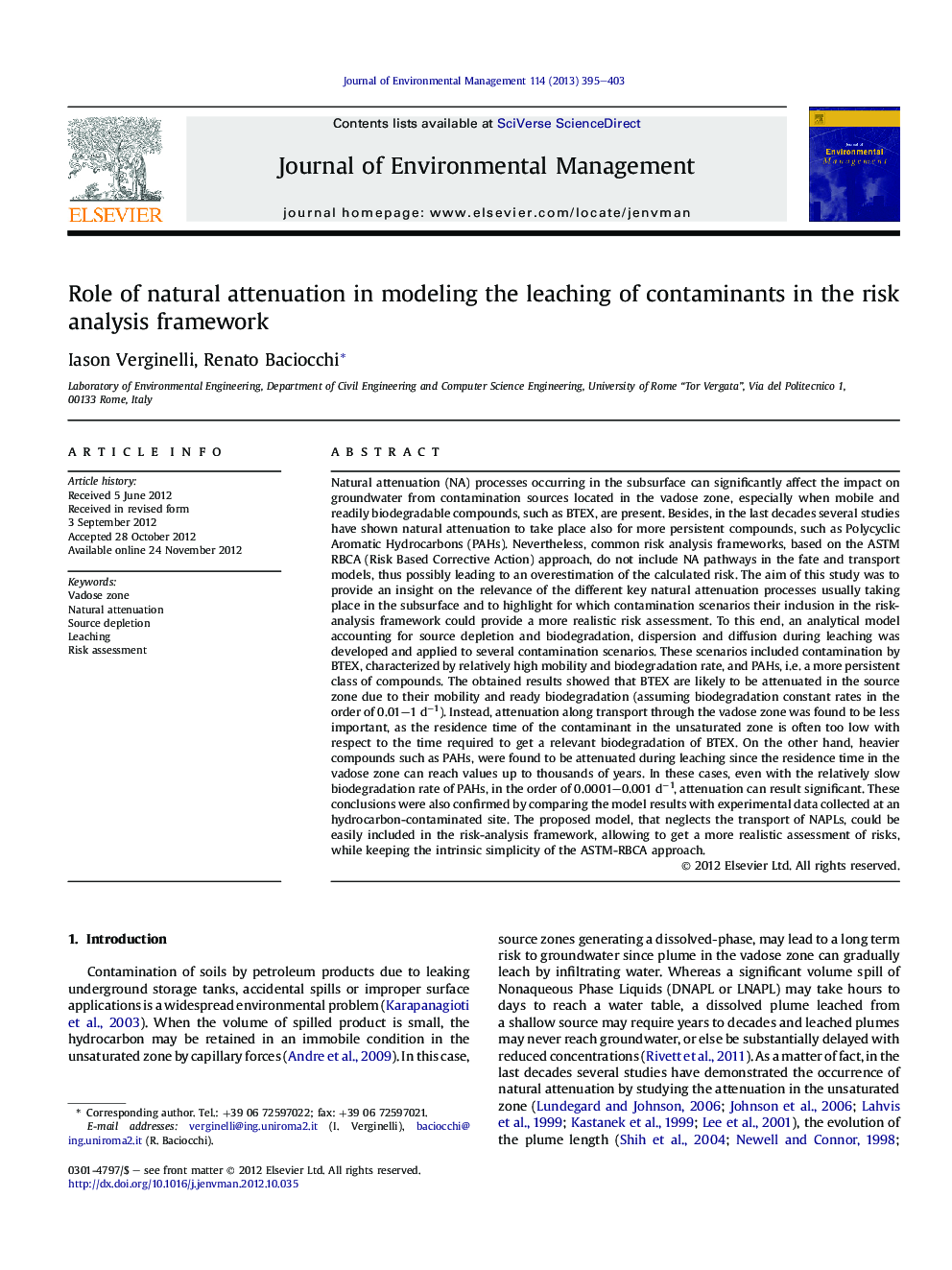| Article ID | Journal | Published Year | Pages | File Type |
|---|---|---|---|---|
| 1056615 | Journal of Environmental Management | 2013 | 9 Pages |
Natural attenuation (NA) processes occurring in the subsurface can significantly affect the impact on groundwater from contamination sources located in the vadose zone, especially when mobile and readily biodegradable compounds, such as BTEX, are present. Besides, in the last decades several studies have shown natural attenuation to take place also for more persistent compounds, such as Polycyclic Aromatic Hydrocarbons (PAHs). Nevertheless, common risk analysis frameworks, based on the ASTM RBCA (Risk Based Corrective Action) approach, do not include NA pathways in the fate and transport models, thus possibly leading to an overestimation of the calculated risk. The aim of this study was to provide an insight on the relevance of the different key natural attenuation processes usually taking place in the subsurface and to highlight for which contamination scenarios their inclusion in the risk-analysis framework could provide a more realistic risk assessment. To this end, an analytical model accounting for source depletion and biodegradation, dispersion and diffusion during leaching was developed and applied to several contamination scenarios. These scenarios included contamination by BTEX, characterized by relatively high mobility and biodegradation rate, and PAHs, i.e. a more persistent class of compounds. The obtained results showed that BTEX are likely to be attenuated in the source zone due to their mobility and ready biodegradation (assuming biodegradation constant rates in the order of 0.01–1 d−1). Instead, attenuation along transport through the vadose zone was found to be less important, as the residence time of the contaminant in the unsaturated zone is often too low with respect to the time required to get a relevant biodegradation of BTEX. On the other hand, heavier compounds such as PAHs, were found to be attenuated during leaching since the residence time in the vadose zone can reach values up to thousands of years. In these cases, even with the relatively slow biodegradation rate of PAHs, in the order of 0.0001–0.001 d−1, attenuation can result significant. These conclusions were also confirmed by comparing the model results with experimental data collected at an hydrocarbon-contaminated site. The proposed model, that neglects the transport of NAPLs, could be easily included in the risk-analysis framework, allowing to get a more realistic assessment of risks, while keeping the intrinsic simplicity of the ASTM-RBCA approach.
► The role of natural attenuation processes in the vadose zone was assessed. ► Biodegradation and source attenuation of BTEX and PAHs were modeled. ► Source depletion was found to be a relevant attenuation pathway for BTEX. ► PAHs attenuation during transport in the vadose zone was found to be significant. ► The ASTM model was found to overestimate the risk for the exposed receptors.
